#bi zine
Text
Very cool. All 22 issues of Anything That Moves--a bi magazine from the 1990s--have been archived by a group of young bisexual people & allies who are making them available online. Here's an article about how that happened & why ATM is still so relevant.
1K notes
·
View notes
Text
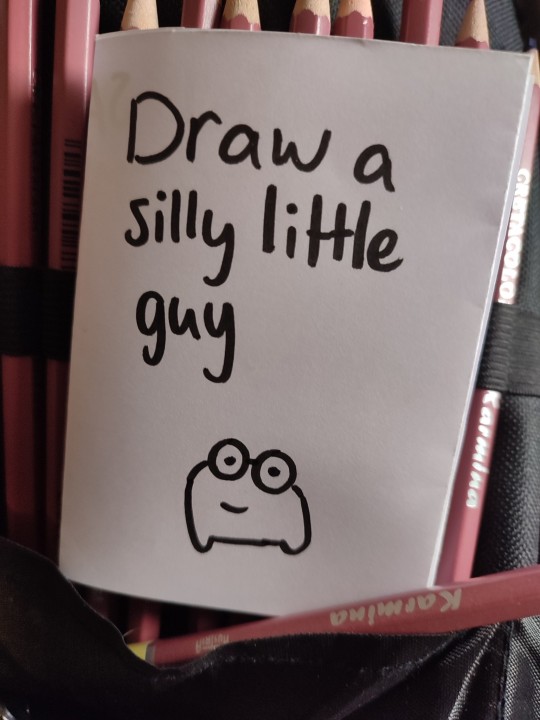




give this a try sometime maybe. it works for me, and i should remember to do it more often. even if not a little creature, put pen to paper and doodle
#bis arts#art#artists on tumblr#my art#traditional art#zine#cute#handmade zine#1 sheet zine#8 page zine#my zine
323 notes
·
View notes
Text
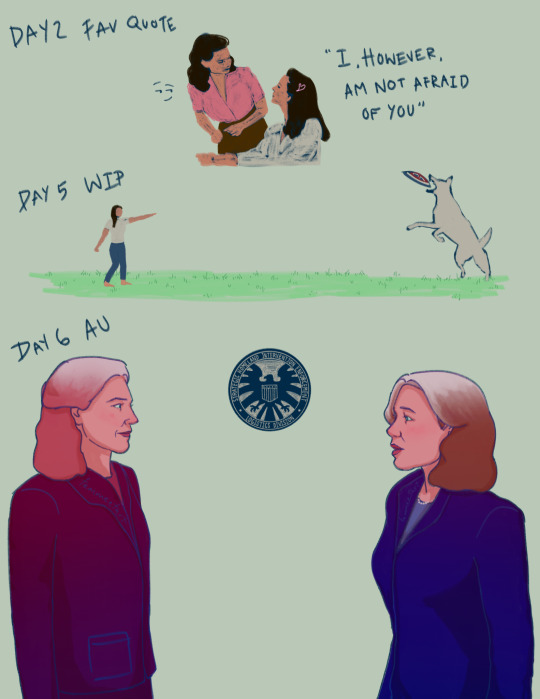
*Dottie "breaking" into s.h.i.e.l.d.* "Peg! Miss me?"
#peggyweek2024#dottie underwood#peggy carter#agent carter#captain carter#the wip was meant for the zine but it had a different perspective n i really hated it. i couldn't figure out the composition#gawd idk how to draw white hair#hayley atwell#bridget regan#fan art#mytrinkets#hey this turned out pretty cute :D#dot is a redhead here or it could be the lightning (its bi lighting :) )#carterwood#sapphic
49 notes
·
View notes
Text
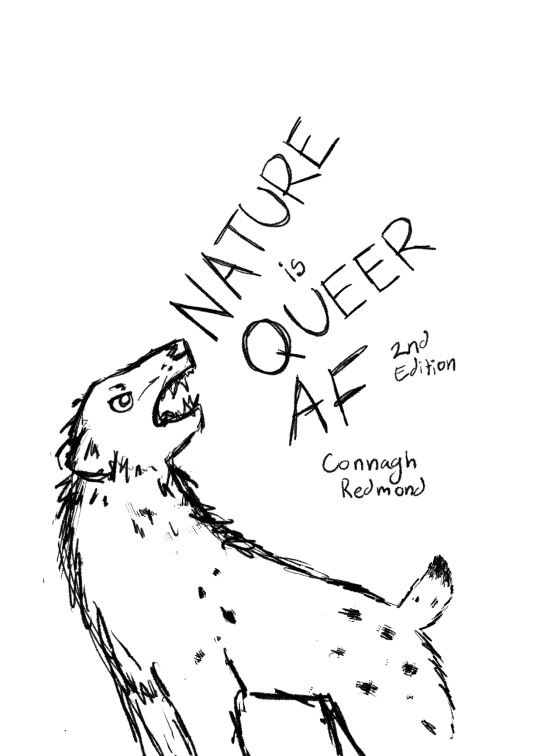
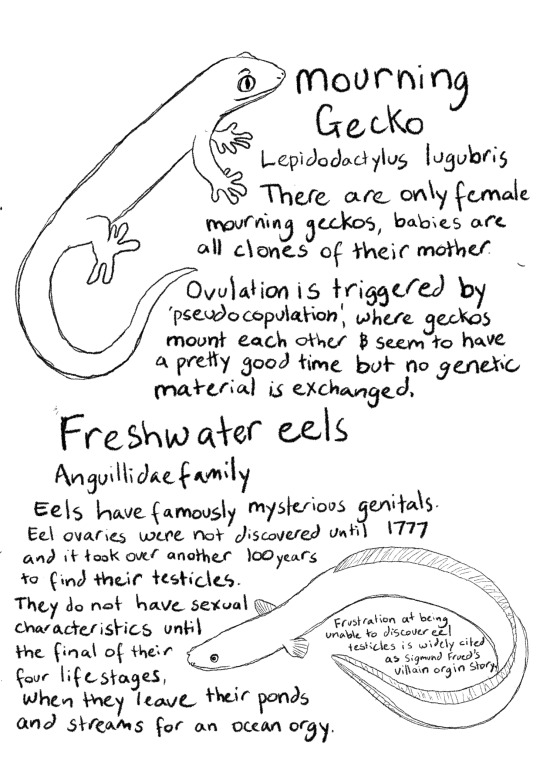

I am making the 2nd edition of my zine that will not die - Nature is Queer as Fuck
It’s about how biology is actually super weird and queer and the ways nature can inspire the lbgtqia+ community 🌈
The 1st version is over 3 years old but it still sells at like every market so giving it some new art and 9 new critters ‘cause it deserves some love for it’s Sydney debut/Mardi Gras season
Here is some redone art (text not finished) and look at one of the new pages!
#nature is queer af#art zine#zine promo#animals#nature#biology#science#lgbtqia#queer#queer artist#pride#plants#gay#lesbian#bi#trans#artists on tumblr#art#science communication
27 notes
·
View notes
Text
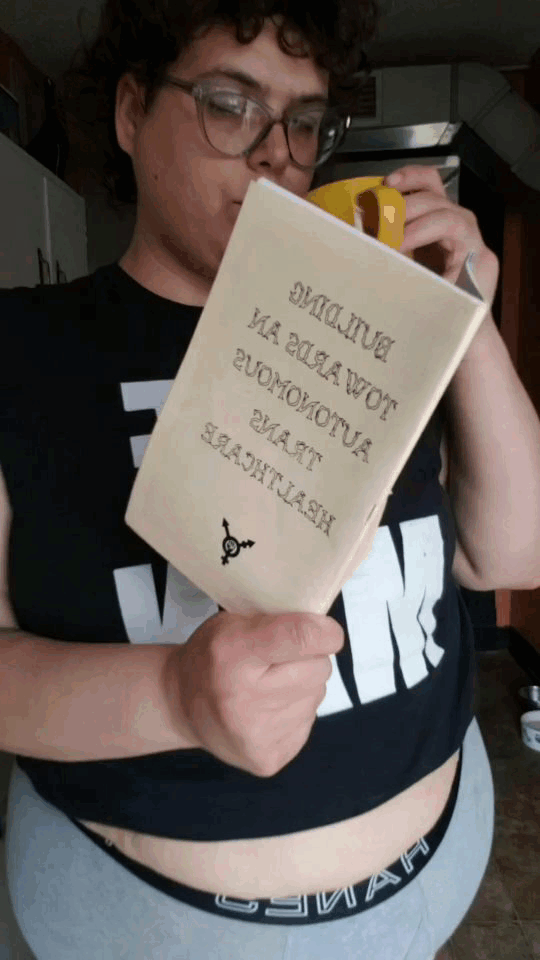
Who wants to read zines and drink coffee??
#coffee#queer#zine#zines#read#reading#gay#lesbian#bi#masc#femme#enby#non binary#nonbinary#trans#transgender#gender#wlw#lgbt#lgbtq#lgbtqia#chubby#curvy#butch#politics
19 notes
·
View notes
Text
The Intersectionality of Queer Identity & Punk Rock
A Zine?
Yes, zine! Zines are like little pockets of subculture just waiting to be discovered. For me, they've been a constant source of fascination since my middle school emo days, when I first read Perks of Being a Wallflower. It was like finding a secret language, a way to express myself outside the mainstream. The Rocky Horror Picture Show and alternative music were my jam back then (and still are!) and discovering that zines could blend both worlds was utterly mind-blowing.
I delved deep into zine archives, soaking up inspiration from creators who came before me. I researched tirelessly, learning the ins and outs of zine-making, and honing my writing skills for the chance to contribute my own voice to this brilliant community. Suddenly, I had this platform where I could talk about everything I loved in one place. It wasn't just about sharing passions; it was about connecting with others who felt the same way, building a community of like-minded souls bound together by ink and paper. It was liberating!
Why did I choose this mode?
As stated before, zines bring together important conversations that people are passionate about. I am pulling from Perks of Being a Wallflower in the sense that I am bridging two concepts that are very close to my heart. As an as a self-described alternative queer man, I believe it is very important to remember where we came from, who came before us. This zine serves as an homage to the queer/alternative voices that came before me; however, this is not just for other queer or alternative individuals. This is for everyone. Regardless of politics, identity, or location, this zine is for you.
Where does Zine culture come from?
Zine culture, with its raw, unfiltered expression and grassroots ethos, finds its roots intertwined with the rise of punk music in the mid-1970s but can be traced all the way back to the early 1930s. Emerging as a response to the commercialization and homogenization of mainstream media, zines served as DIY platforms for individuals to share their thoughts, ideas, and creations in a tangible, accessible format.[x]
The DIY ethos embedded within zine culture finds its parallel in the punk movement. While previous musical genres such as skiffle and rock and roll also embraced DIY elements, it was punk that elevated the concept to a central tenet of its cultural and musical identity.[x] Punk rejected the polished, corporate-driven sound of mainstream music in favor of a raw, do-it-yourself approach that prioritized authenticity and individuality over commercial success.
In the face of state intervention and commercialization within the music industry, participants in alternative music scenes often embraced DIY as a form of resistance. By creating and disseminating their own zines, bands, artists, and activists asserted their independence from mainstream institutions and asserted their right to self-expression. This resistance was not merely a rejection of external forces but also a reclaiming of cultural autonomy and a celebration of DIY values.
Zine culture, therefore, emerges as a direct response to the limitations and shortcomings of mainstream media and culture. It represents a space where creativity knows no bounds, where voices that are often marginalized or silenced can find resonance and solidarity. In its simplicity and accessibility, zine culture embodies the spirit of punk's DIY ethic, offering a platform for self-expression and community-building that continues to thrive and evolve in the digital age.
Why are zines important?
Zines are vital conduits for self-expression, community building, and the preservation of alternative voices. Rooted in a rich history of resistance and creativity, zines offer a platform for individuals to share their thoughts, ideas, and creations outside the constraints of mainstream media. Emerging as a response to the homogenization and commercialization of traditional publishing, zines embody a rebellious spirit that champions authenticity and individuality.
Unlike glossy, corporate publications, zines are often cheaply made and readily accessible, democratizing the process of expression and inviting participation from individuals of all backgrounds. This accessibility not only empowers creators to share their stories but also fosters a sense of connection and camaraderie among like-minded individuals who share common interests and passions.
At its core, zine culture is about more than just printing; it's about building community and amplifying marginalized voices. By creating and sharing zines, creators forge connections with readers, sparking conversations and collaborations that transcend geographical boundaries. Zines serve as historical and cultural artifacts, documenting the experiences and perspectives of diverse communities, ensuring that alternative narratives are preserved and celebrated. In a world where mainstream media often overlooks or silences marginalized voices, zines offer a space for these voices to be heard, valued, and embraced.
The Basics
A subculture refers to a distinct group within a larger society that shares a set of beliefs, values, practices, and interests that deviate from mainstream culture. Subcultures are born out of a variety of social, cultural, and historical factors, often as a response to the perceived limitations or inadequacies of mainstream society. Dissatisfaction with societal norms and values can lead individuals or groups to seek out alternative spaces where they can express themselves authentically and find like-minded peers.
Subcultural groups often draw inspiration from existing cultural forms, such as music, fashion, art, and literature, which they reinterpret and repurpose to reflect their own distinct identities and sensibilities. This process of reclamation allows subcultures to create new meanings and symbols that resonate with their members, contributing to the evolution and diversification of subcultural identities.
Why punk?
In "Visual Vitriol" by David A. Ensminger, the author encapsulates the essence of punk rock as a refuge for those seeking a space to express themselves authentically. He reflects on the allure of punk, suggesting that many are drawn to it for the opportunity it provides to embrace a queer or unconventional identity comfortably. The quote from "INSIDE FRONT #13" captures this sentiment, highlighting punk as a haven for those who feel alienated from mainstream culture, offering a platform for self-expression without judgment.
Ensminger also acknowledges the significant influence of the LGBTQ+ community within punk. He asserts that "Gays shaped both the looks typifying punk and the history of punk music," recognizing the pivotal role of LGBTQ+ individuals in defining punk's aesthetic and its evolution as a cultural movement. This acknowledgment underscores the profound impact of queer individuals on the visual and musical elements that have become synonymous with punk. In essence, Ensminger's summary portrays punk not only as a musical genre but also as a cultural space shaped by and for those who seek to challenge societal norms and celebrate their identities openly.[x]
Punk 101
Punk rock emerged in the mid-1970s as a raw, energetic, and rebellious response to the perceived stagnation and commercialization of mainstream rock music. Its roots can be traced back to earlier musical movements such as garage rock, protopunk, and glam rock, which laid the groundwork for the aggressive, stripped-down sound that would later define punk. Bands like The Velvet Underground, The Stooges, MC5, and New York Dolls contributed to the development of this new musical aesthetic, characterized by its simplicity, urgency, and confrontational lyrics.
The early punk scene in New York City, centered around clubs like CBGB and Max's Kansas City, saw the emergence of pioneering bands like Ramones, Blondie, Talking Heads, and Patti Smith. These artists rejected the polished, virtuosic style of mainstream rock in favor of a do-it-yourself (DIY) ethos and a more direct, unfiltered approach to music. Meanwhile, across the Atlantic, a parallel punk movement was taking shape in the United Kingdom, spearheaded by bands like Sex Pistols, The Clash, The Damned, and Buzzcocks. Fuelled by a sense of disillusionment with the social and political climate of the time, UK punk bands captured the attention of disaffected youth with their raw energy and provocative lyrics.
Ensminger’s analysis that highlights the significant influence of the LGBTQ+ community within punk, recognizing their pivotal role in shaping the genre's aesthetic and cultural evolution. Punk provided a refuge for those seeking to express themselves authentically, including queer and unconventional identities. This acknowledgment underscores punk's broader significance as not just a musical genre but a cultural space where individuals could challenge societal norms and celebrate their identities openly.
Punk rock had a profound impact on music, fashion, and culture at large. Its influence can be seen in subsequent genres like hardcore punk, post-punk, and alternative rock. Punk's DIY ethic and spirit of rebellion continue to inspire artists and activists around the world, reminding us of the power of music to challenge the status quo and amplify marginalized voices.
What about Riot Grrl?
Isaacson's analysis reveals Riot Grrrl's enduring legacy of empowerment and activism, demonstrating how its in-fluence resonated across subsequent generations of punk and Queercore artists. Riot Grrrl's ethos of self-expression and collective action inspired a new wave of feminist and queer activism within punk and beyond, shaping the cultural landscape and providing a voice for marginalized communities.
The problematic past of punk history
The problematic past of punk, as explored in "Cultural Criminology" by Jeff Ferrell and Clinton R. Sanders, sheds light on the complex relationship between subcultures, societal norms, and the criminal justice system. While punk emerged as a form of resistance against societal constraints, it also harbored elements of extremism and prejudice, particularly evident in its association with neo-Nazi skinheads.[“Subculture, Style, and Crime.” Cultural Criminology, 1995]
The evolution of punk, like many other musical genres, began as a grassroots expression of resistance by marginalized groups within the political-economic system. Ferrell and Sanders emphasize that punk's origins lie in the struggles of young people with limited resources, echoing a sentiment of rebellion against societal oppression. However, as punk gained mainstream attention, certain factions within the subculture, such as neo-Nazi skinheads, emerged, espousing inflammatory and prejudiced ideologies.
Moreover, Ferrell and Sanders note the paradoxical nature of punk's evolution, where expressions of resistance can become sanitized and marketable to mainstream audiences over time. While punk initially served as a platform for marginalized voices to challenge societal norms, its commodification and mainstream success have sometimes diluted its original rebellious spirit.
What is “Queercore?”
Viva la resistance!
"Queercore: How to Punk a Revolution," directed by Yony Leyser and featuring performances by notable figures such as John Waters, Kim Gordon, and Bruce La Bruce, is a documentary that delves into the history and ethos of the Queercore movement. Released in 2017, the film provides a comprehensive look at this subculture that emerged within the punk rock scene as a form of queer ex-pression and resistance. [Leyser, Yony, director. Queercore: How to Punk a Revolution. Totho Productions, 2017]
The documentary explores how Queercore arose in the 1980s as a response to the lack of representation and visibility of LGBTQ+ individuals within both mainstream society and the punk scene itself. It showcases interviews with key figures who were instrumental in shaping Queercore, shedding light on their motivations, struggles, and achievements. Through their stories, the film captures the spirit of defiance and creativity that defined Queercore, challenging societal norms and advocating for queer liberation. [x]
D. R. DeChaine's article "Mapping subversion: Queercore music’s playful discourse of resistance" provides an insightful exploration into the world of Queercore, shedding light on its history, identity politics, and subversive nature within the punk rock scene. The article delves into how Queercore emerges as a fusion of punk rock music and queer politics, embodying punk's rejection of mainstream commercialism with its fast, raw sound and DIY ethos. It emphasizes the politically charged nature of Queercore, where artists use sexually explicit and often vulgar lyrics to challenge societal norms and express a culture that defies mainstream conventions.[x]
A key theme is the role of “play” within Queercore, offering participants a space to resist and subvert dominant cultural narratives. This play is not just recreational but empowering, providing temporary liberation from the oppressive ideologies of mainstream culture. DeChaine highlights the historical silence around homosexuality in music, pointing to the challenge of connecting queer and punk discourses due to this silence.
In Ambrosch's exploration of gender, feminism, and queer identity within punk culture, "'Refusing to Be a Man': Gender, Feminism and Queer Identity in the Punk Culture" delves into the subversive nature of punk as a reaction to the 'rock machismo' prevalent in the 1970s. From its inception, punk has challenged heteronormative notions of gender and sexuality, with first-wave artists intentionally blurring boundaries. Ambrosch highlights bands like Bikini Kill and Crass as exemplifying an intersectionality and blurring of gender boundaries by first-wave punk artists and their exploration of nonmainstream gender identities.[x]
The author explores the evolution of the term 'punk,' tracing its origins from Shakespearean times to its later connotations of 'young male delinquent.' This linguistic history mirrors punk's rebellious spirit and its embrace of non-mainstream identities. Punk, according to Ambrosch, fosters an environment for challenging established norms, including gender and sexuality, with bands since the late 1970s addressing these issues.
However, Ambrosch also critiques punk's gender dynamics. Drawing on Sharon Cheslow's insights from Chalk Circle, the author discusses how male anger is often romanticized in punk, while female anger is viewed as threatening. Men tend to dominate cultural spaces within punk, making it challenging for women and LGBTQ individuals to fully participate.
Queercore Bands
"QUEER AS PUNK: Queercore and the Production of an Anti-Normative Media Subculture" by C. Nault, published by Routledge in 2013, offers a comprehensive examination of the Queercore movement and its role in creating an anti-normative media subculture. This book delves into the origins, development, and significance of Queercore as a subversive force within both the punk rock scene and broader LGBTQ+ culture.[x]
Nault's work highlights how Queercore emerged in the 1980s as a response to the marginalization of LGBTQ+ individuals within punk and mainstream media. The book explores the ways in which Queercore artists used music, zines, and other forms of media to challenge heteronormativity and traditional gender roles. By rejecting assimilation and embracing radical self-expression, Queercore became a platform for marginalized voices to be heard.
The author discusses key figures and bands within the Queercore movement, such as Tribe 8 and Pansy Division, who used their music and performances to confront societal norms and address issues of sexuality, gender identity, and politics. Nault also examines the impact of Queercore beyond its music, delving into its influence on art, literature, and activism.
Problematic Queercore Bands
Without naming any specific bands or groups, I think it is important to acknowledge the problematic side of Queercore. Just like punk rock, Queercore has its controversial and horrific sides. I believe it is crucial to acknowledge problematic Queercore bands as their actions and behavior can have significant consequences for the LGBTQ+ community and the broader punk scene. By shining a light on these issues, we can address harmful behaviors, challenge oppressive attitudes, and work towards creating safer and more inclusive spaces within the scene.
Acknowledging problematic behavior within Queercore bands helps hold them accountable for their actions. These bands may espouse values of inclusivity and acceptance, but if their actions contradict these principles or perpetuate harm, it's essential to call attention to it. Holding individuals and groups accountable for harmful behavior sends a message that such actions will not be tolerated and helps protect vulnerable members of the community. This allows for conversations about power dynamics, privilege, and accountability within the LGBTQ+ community itself. Just because someone identifies as queer does not absolve them of responsibility for harmful actions.
Being queer does not inherently make you anti-racist. Being queer does not inherently make you anti-fascist. Being queer does not inherently make you a feminist. Being queer does not inherently make you a person with good values.
Into the Mainstream
Despite the flaws of individual figures within the movement, Queercore's presence in the mainstream contributes to greater visibility and acceptance of LGBTQ+ identities. Just as Oscar Wilde's contributions to queer literature remain significant despite his personal flaws, Queercore bands play a vital role in amplifying queer voices and experiences. Their presence challenges mainstream narratives and provides a platform for LGBTQ+ individuals to express themselves authentically.
Queercore as Resistance
Queercore embodies a defiant rejection of mainstream expectations and norms regarding gender and sexuality. Its very existence challenges the notion that queer identities should be hidden or marginalized, instead asserting the right to visibility and self-expression.
At its core, Queercore disrupts dominant narratives by amplifying queer voices and experiences. Through music, zines, art, and DIY activism, it provides a platform for individuals to express their identities authentically, free from societal constraints. This radical self-expression is inherently political, challenging the status quo and demanding recognition and acceptance for all sexual orientations and gender identities.
Queercore's resistance is multifaceted, extending beyond the realm of culture and art to encompass social and political activism. It confronts discrimination and violence against LGBTQ+ individuals, advocating for equal rights and protections under the law. Through grassroots organizing and community building, Queercore fosters solidarity among marginalized communities, amplifying their collective voices in the fight for justice and liberation.
Moreover, Queercore serves as a form of cultural resistance, reclaiming spaces traditionally dominated by heteronormative and cisnormative narratives. By creating inclusive and welcoming environments within the punk and DIY scenes, it challenges exclusionary practices and fosters a sense of belonging for queer individuals. In doing so, Queercore disrupts hegemonic power structures and asserts the right to exist unapologetically in all spaces.
Queercore's resistance is both personal and collective, challenging oppression at individual, societal, and systemic levels. By embracing radical self-expression, advocating for social change, and reclaiming cultural spaces, Queercore stands as a defiant assertion of queer identity and autonomy in the face of adversity.
What’s in it for me?
Haha, get it? Ah, it’s a Queercore joke. Pansy Division? Anyways… Queercore extends further than just the queer community, it embraces feminist and BIPOC intersectionality while providing a platform for marginalized voices. In the face of ongoing discrimination and violence against LGBTQ+ individuals in America, Queercore serves as a beacon of resistance, advocating for social change and celebrating diversity.
At its core, Queercore challenges the heteronormative and cisnormative structures pervasive in society. It disrupts traditional narratives of gender and sexuality, offering a space for individuals to explore and express their identities freely. This liberation extends to feminist and BIPOC perspectives, acknowledging the intersecting struggles faced by marginalized communities. By amplifying diverse voices, Queercore dismantles oppressive systems and paves the way for intersectional solidarity.
In America, anti-LGBT sentiment remains a pervasive force, manifesting in various forms of discrimination, violence, and legislative attacks on queer rights. Queercore confronts this hostility head-on, advocating for LGBTQ+ visibility and empowerment. Through music, zines, and DIY activism, it challenges societal norms and demands recognition and acceptance for all sexual orientations and gender identities. By rejecting assimilationist tendencies and embracing radical self-expression, Queercore asserts the right to exist unapologetically in a hostile environment.
Furthermore, Queercore serves as a bridge between queer and straight/cis communities, fostering understanding and empathy across divides. It invites allies to participate in the struggle for LGBTQ+ rights, recognizing that liberation requires collective action. By creating spaces that welcome individuals of all identities, Queercore promotes dialogue and mutual support, challenging stereotypes and fostering solidarity. Queercore isn't just for queer people; it's for everyone committed to building a more inclusive and equitable society.
#queercore#punk#punk rock#gay#lesbian#bisexual#transgender#bi#lgbt#lgbtq#lgbtqia#essay#anti transgender#helpful critics welcome#protect trans people#protect trans youth#queer#queer community#lgbtq community#lgbt pride#zine#zine adjacent#this is for a class#there is a super cool cover#but tumblr is not set up for zines#because its tumblr#alt#alternative#long post#in progress
8 notes
·
View notes
Text

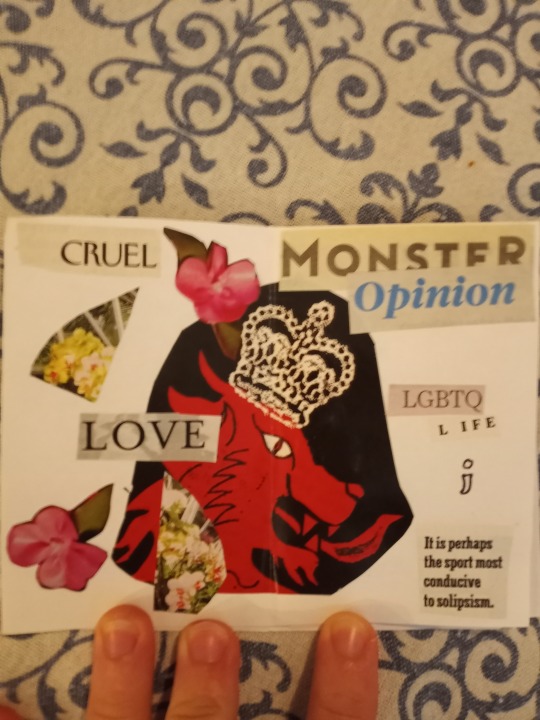


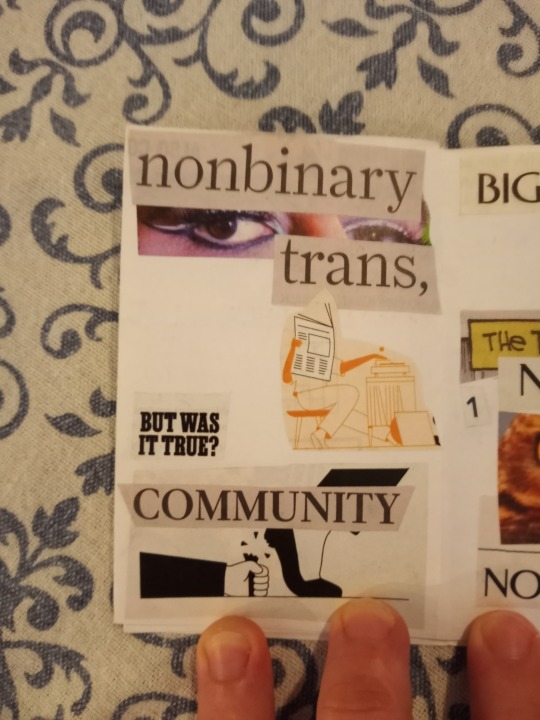


Made a zine for my library's zine bin.
Now it is also for the internet
#zine#newspapers#its gay#i'd probably do this again#it was fun#bis wanted to see so now everyone gets to
20 notes
·
View notes
Text
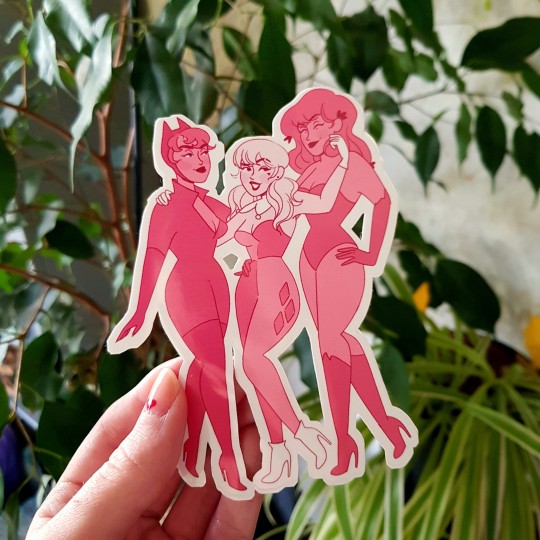
I made stickers! They're on etsy!
#and if you'd like there are other things you can buy on there too#i feel its a safe assumption that if you want these queer icons you might like the gay history zines i have too#digital art#sketch#art#illustration#artists on tumblr#character design#etsyseller#illuatrator#bi#harley quinn#catwoman#poison ivy#gotham city sirens#dc#dc harlivy#harley x ivy#harlivy#galentinesday
64 notes
·
View notes
Text
SAPPHIC THEMED ZINE!!
Hi! Are you sapphic? And an artist (be it visual - paintings, illustrations, etc, or a writer - prose, poetry, nonfiction, anything else)?
I’m putting together a zine celebrating sapphism and love between women, so if you want a place to maybe share some of your art or are interested in contributing I’d love to hear from you! It can be tangentially related artwork including sapphic characters/depictions/relationships etc or it can be specifically focused on the wlw experience, anything is welcome. As long as it can be presented on an A5, 2D page.
I’ll put the collection together (featuring my own work, my friends’ and others who are interested!), and there’ll be an online version available for you to see! I’ll probably print and bind some physical copies as well. How long it takes depends on how man people are interested in contributing art, but I’m aiming to have it done by the end of May :)
I’ve always wanted to put together my own zine, and if you have some work celebrating or exploring the wlw experience and are interested in being part of a small project I’d love to hear from you! Everyone will of course be credited in the zine, and can have their name and an optional small bio or be credited anonymously if they wish :)
If you’re interested, please comment or dm me!
37 notes
·
View notes
Text
Bi/ Pan Huntlow was confirmed! Let’s celebrate! Art by @twogoldenflowers. DO NOT REPOST!

#the owl house#huntlow#owl house#toh#hunter#willow park#huntlow fanart#toh fanart#toh hunter#toh willow#queer#lgbtq+#bi#pan#bisexual#pansexual#huntlow zine
35 notes
·
View notes
Text
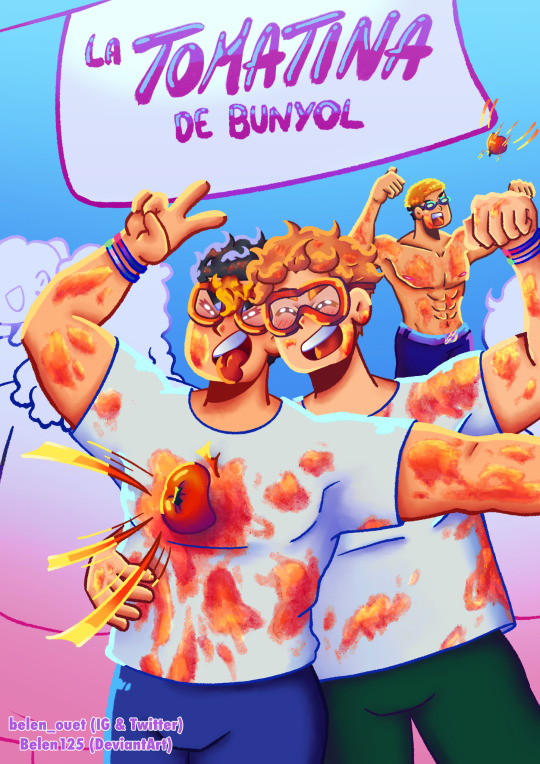
[Haikyuu!!] ¡¡YakuNoya + Tanaka en La Tomatina para el zine de @ hqzineproject !! 🍅💥
#haikyuu#yakunoya#nishinoya#yaku#fanart#belen-ouetart#noya#haikyuu rarepair#haikyuu rareship#tanakaryuunosuke#ryuunosuke tanaka#bi#trans yaku#trans noya#trans nishinoya#t4t#haikyuu zine#yaku morisuke#morisuke yaku
3 notes
·
View notes
Text

truly lmao 2024 lambda literary award finalist wynnstannery
#have probably already heard of these awards w/o absorbing it but has a sizable [twitter acct you follow follows this acct] overlap for one#wikipedia blurb ''to recognize the crucial role lgbtq writers play in shaping the world...celebrate the very best in lgbtq literature''#Lol! naturally everyone set to laugh abt Individually being lambda award finalist Authors amidst 40+ anthology contributors. sure#and of course oh absolutely crucial cam stone page. we did make the back of book blurb too after all#born of [crucially soph nothingunrealistic (a) investigates that akd role which (ai) leads to me also checking it out. later (b)#investigates this Call For Submissions For All Trans F&F Zine which (bi) leads to me going ''oh so true cam stone Needs to be there'']#all originating in The Wrong Fake ''Fans'' Show Up For Billions By Way Of Beloved Character Winston lmao#b/c fr imagine the trans f&f zine Doesn't have a Did You Know That???? page abt a delightful akd role & canon nonbinary f&f character#but this amidst Plenty of ''fake'' ''wrong'' ''fans'' messing around w/the concept of Fast & Furious as a Work throughout#as i said & got the feedback of [hell yes You Get It] that the premise Guarantees you get a very Varied & inherently Playful response#not b/c playfulness need be ''unserious'' but it sure need not be ''serious.'' like f&f itself; as part of [the premise guarantees it]#& that the Range of ways ppl can approach this broad concept is like the Range of ways ppl can approach the broad concept of Gender lol#& not Unearnest but needing no Gravitas / ''serious'' ''legitimacy'' guaranteed in turn to ''validate'' your efforts#and your not being the ''right'' or ''expected'' audience getting the perhaps straight(tm)forwardly intended experience here lmao#so in many ways it did feel very resonant / relevant to wynnstannery#embracing [the one use of: editor's note!] and [the one use of: the word ''autistic''!]#2 trans 2 furious#which is probably gonna get a physical reprint sooner than later; pdfs still available despite the lack of link there#was already The Intention if vaguely so; now with the added ''can put the 2024 Lambda Award Nominee / Finalist on the cover lol''#page 54 (i believe) brought to you by a couple of quantnoisseurs; rushed to finish last minute then ft. some post deadline edits lmao#classic....nonzero other works i've Heard Of! nice#which: sure does seem like the focus here is like ''did you hear about these books? :)'' as many ''awards'' can ultimately be#like i Am hearing about them now. had seen abt Being Ace on twitter interesting interesting. hi honey i'm homo hell yeah#do we have one or two f&f films left? put cam stone cameo in there for real. Fast furious worth the effort worth the cost#& just shoutout to the like bifurcation of Akd Role Types. [intense in a relatively restrained affect way. some dramatic flair for sure]#and [spontaneous! vivacious! bright! playful! pretty emotionally open!] that's right lmao
3 notes
·
View notes
Text
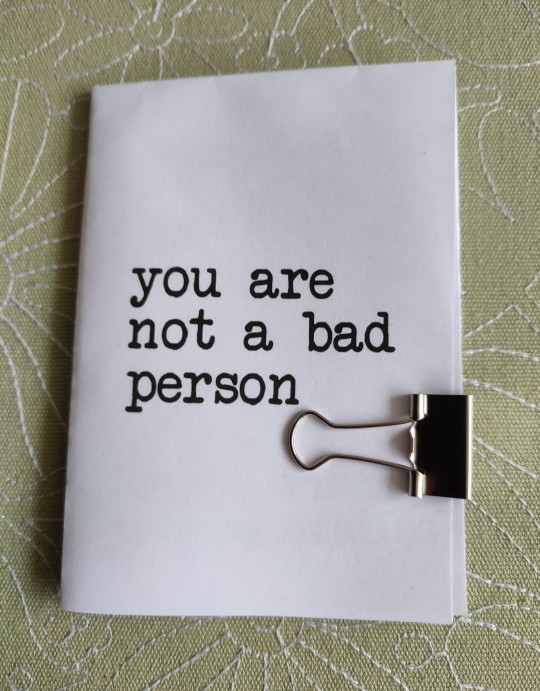


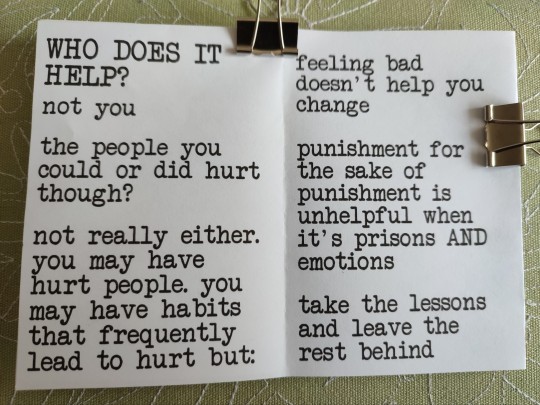

this zine may not be about you. for a long time these thoughts were in my brain but only to lovingly yell at my friends. this zine may be about you but not helpful to you at this time. i hope it's helpful to some though.
if you like this zine you may also like the body neutrality movement. and the song "can't go back" by the crane wives, which i kinda quoted as well. leave the rest behind.
this is part of my project to make a zine a day in april
some things that didn't fit in this zine were:
you gotta learn. you gotta learn that learning doesn't mean feeling bad.
it doesn't help you act right to feel bad about previous things. guilt is useful to a point. that point is reached when you know what you did wrong
#zine#supportive#mary oliver quote#handmade zine#1 sheet zine#8 page zine#bis arts#physical art#bis speaks#you are not a bad person#mini zine#zine making#mental health#mental wellness#coping#zinepril#aprine
356 notes
·
View notes
Text
Reading posts like I don't disagree but have we considered that maybe this is not a conversation worth having within this specific framework.
#''stupid as hell to cite one trans positive zine from the 90s are representative of all bi people'' yeah#''and to prove that I'm going to post an excerpt from one study that showed the majority of participants regardless of orientation#were transphobic'' hm.
12 notes
·
View notes
Text
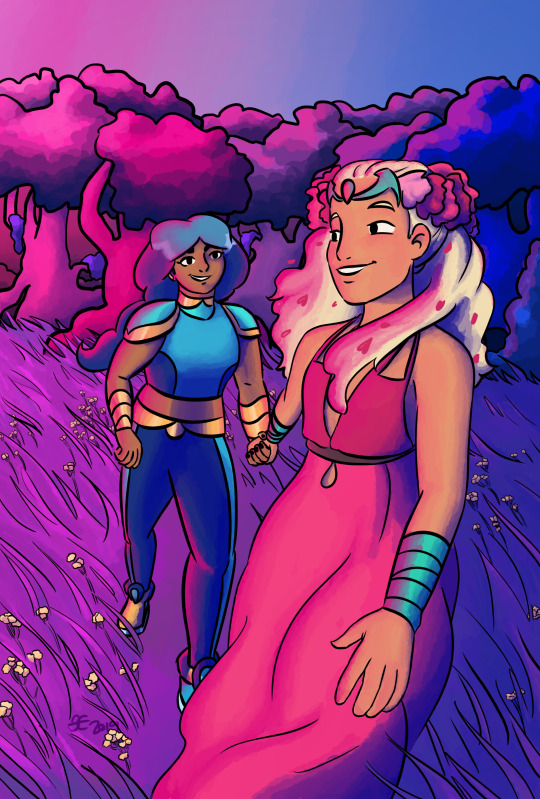
Mermista and Perfuma for a She Ra Bi Visibility fan zine
[image description
a digital drawing of Mermista and Perfuma holding hands. Perfuma leads Mermista towards the camera through a field of grass and flowers. Behind them is a forest. The lighting from left to right goes from pink to purple to blue, in the colours of the bi flag. The colours look like sunset.
end id]
#she ra#zine piece#fan art#bi visibility#zine#fan zine#spop#spop fanart#image description#digital art#2019
55 notes
·
View notes
Text
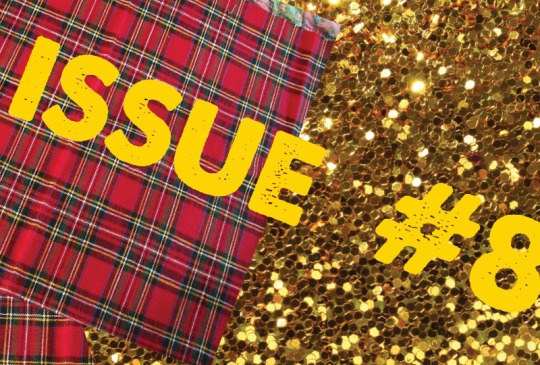
TOPICS IN THIS ISSUE INCLUDE: Disability, Dating, Oppression & Self Care, Tallullah Of Uterus Valley, Bisexuality & Stigma, Love vs Infatuation
Kindly use this #ACallForHealingAndRebellion to discuss the zine
ACCESSIBILITY NOTE: According to Google Docs, the issue is accessible for those who use screen readers, however this zine issue is also available as a PDF.
[image description: A horizontal rectangle. graphic. The background is half red tartan plaid fabric and the other half is gold glitter. The two textures are placed diagonally with the plaid fabric over the gold glitter a bit. On top, diagonal & in large yellow orange letters, in a font that is bold but looks aged, as if it was chipping a bit, it reads: issue #8]
#zine#political zine#activist zine#art zine#poetry zine#bisexuality#biphobia#bi erasure#queer#queer pride#dating#disability and dating#disability#disabled#disabled artist#disabled poet#infatuation#love
2 notes
·
View notes